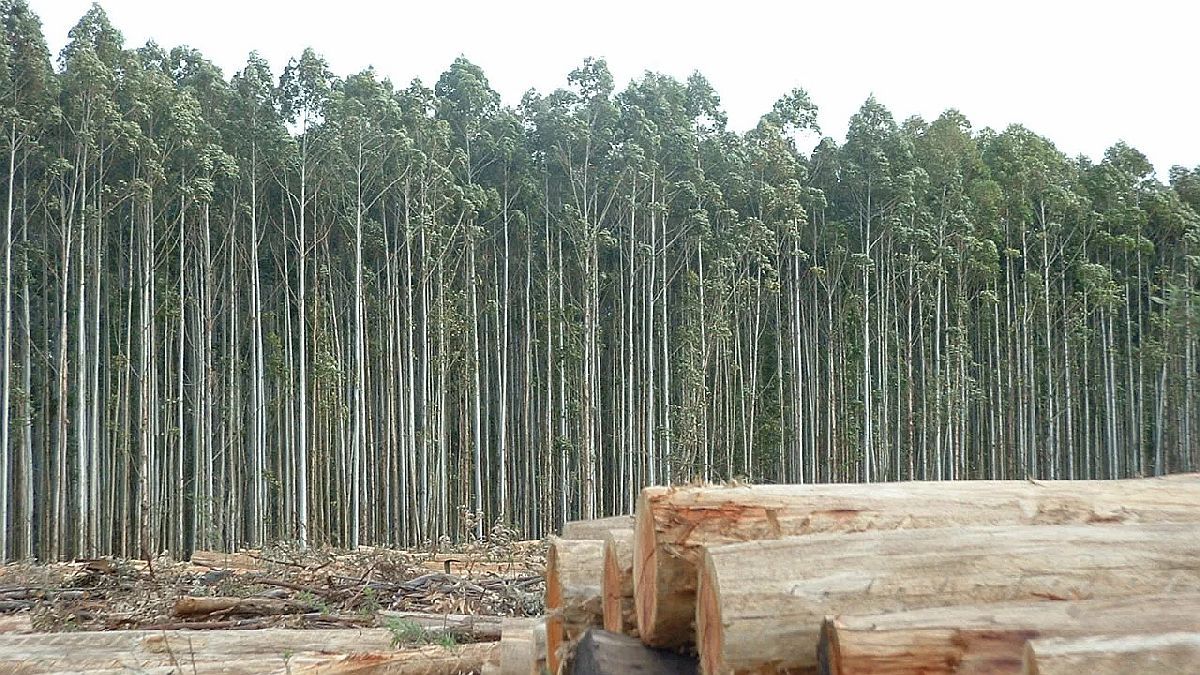Value addition includes the production of pulp and paper; wood and boards for housing and furniture; electrical and thermal energy and various chemical products. All products with a very low carbon footprint and necessary for the decarbonization of the economy.
With 13,000 forestry producers and more than 6,000 companies, the forest-industry It directly and formally employs about 100,000 people and exports around 550 million dollars annually..
“According to data from the Finnish consulting firm AFRY that indicates that the growth in the value of the global forestry industry for 2019-2035 will be more than 210 billion dollars, Argentina has a unique opportunity to position itself as one of the main players in the world,” highlights the Council.
But at the same time he warns that for this reality to materialize, the cost associated with transportation and logistics must adapt to international parameters so that the business can prosper. “In some cases, greater competitiveness requires investments in infrastructure and maintenance. In others, it is just regulatory changes or efficiency changes in time and management.”, he details.
The forestry sector is intensive in the use of land transportation
Given that the forestry sector is intensive in land transportation, the implementation of industrial forestry projects only in the Virasoro area (Corrientes) caused the number of trucks circulating on Mesopotamian routes to increase by 50%.
“This growth It was not accompanied by route improvementswhich are currently not in a position to sustain this transit due to their poor condition. With adequate financing, the acquisition of dual-train trucks would be promoted, which would speed up operational times, improve road safety, and reduce both costs and the number of trucks in circulation,” exemplify the forestry companies.
They also observed that in the case of the railways – section from the Zárate terminal (Buenos Aires) to Garupá (Misiones) – in addition to forest rolls, the line transports stone, cement and cellulose, among which they add up to more than 1 million tons per year transported. In addition to requiring investments for its improvement, the Council estimates that the current travel times (5 days) They could be reduced by half only by improving downtime due to personnel turnover and operations.
In terms of river transport, they demand that the regulations of the National Law No. 27,419 on the Development of the Merchant Navy be completed, since the asymmetry of the work framework of the embarked personnel with the regimes of the neighboring countries is maintained, increasing the costs of the Argentine flag. On the other hand, it is requested that Access and cost of importing barges are improved, to have a greater supply of operators, and expedite the authorization of vessels since problems of delays in inspections and authorizations are verified. They also requested to reduce the costs of the waterway so that it is viable and efficient, exhaustively reviewing the comparative costs in its use both in time and dollars, such as that of pilotage, which shows that in the ports of Entre Ríos it is charged almost 3 times more than in Montevideo for said service.
For its part, to improve the navigation of the Uruguay River, it is proposed repair the beacon on the Argentine side (downed buoys) and sign an extension contract for the maintenance of dredging, guaranteeing operation at a 25-foot draft until the end of 2025.
Pending improvements in railways and river transport
Regarding the Línea Urquiza railway, the Council highlights that The train operates slowly (30km/hour) Due to the poor condition of the roads, it took 5 days to complete the entire section. Many times inconveniences arise that delay the transfer even more. Currently, maintenance of the roads is carried out only with what is essential for them to be operational. There are no suitable wagons available, which are type 49 and type 53. Only containers in poor condition are available.
A situation that does not require investment to improve is that training is stopped for several days due to the turnover of railway personnel and/or operational problems. If operations are streamlined in loading maneuvers and personnel changeover to reduce downtime, it is estimated that the travel time could be completed in half the current time.
In river transport and routes, the Council highlights that the main routes used by commerce in the industrial forestry sector are national routes 14 and 120. Currently the first of them is collapsed for cargo transit. Added to this is a high degree of deterioration, a consequence of the large amount of cargo transportation that circulates on the Paso de Los Libres (Corrientes) to San José (Misiones) section.
This section is characterized by being up and down, with very poor maintenance, unpainted and without a shoulder along most of its route. All of this currently results in a high accident rate, often with fatal results. The Highway in the Paso de los Libres to Zárate (Buenos Aires) section, for its part, presents a significant level of deterioration and will become impassable in the short term if the necessary repair investments are not made. And Route 120 has already begun to deteriorate rapidly due to the continuous loads that begin to circulate.
Added to this is the issue of the tollswhich are located in the vicinity of forest basins that charge the pass for each time a forest cargo transport circulates, even on short journeys. This has a significant impact on the cost of local transportation. It is necessary that the toll collection for forestry cargo transport be carried out per day and not for each pass of the truck.
As for dual-train trucks, which stand out for their load capacity and speed, they are a widely implemented means of transportation in neighboring countries such as Brazil, Chile and Uruguay, which demonstrates their efficiency and safety. The problem is that today there are a limited number of routes enabled for the circulation of bitren-type transport in the country. New national regulations are needed to facilitate its circulation and the authorization of new corridors.
Problems operating in ports
Regarding the port of the City of Buenos Aires, the report highlights that there are management problems in the terminal that are easy to solve. Although an exporter has 14 free days to remove and enter containers at the terminal, they can only be entered 7 days before the ship enters. Likewise, to enter loaded containers you must request an appointment and it is very difficult to get them, In addition to the fact that they are very expensive ($130). The turn to enter the terminal It’s only 2 hours and arriving on time from origin (Misiones, Corrientes) is uncertain, increasing the cost if a new shift must be requested and paid for.
On the other hand, if the shipping company’s ship is delayed, extraordinary expenses apply. For example, if the ship is delayed, they do not allow the containers to enter, and they must remain on the truck until the new ship arrives. Thus, a fine is generated for the exporter for not delivering the containers within the 14 free days. All these expenses are borne by the exporter, being unrelated to the origin of the problem. This operational problem is onerous and bureaucratic, and its solution does not require investment, only decision.
In this specific case, it is proposed exonerate exporters from fines generated by delays. Extend the time limit for entering the terminal and reduce the cost of issuing appointments. Extend the deadline for the entry of loaded containers into the terminal and extend it to more than 7 days prior to the entry of the ship and request the national government to take action so that the shipping companies comply with the deadlines, also adapting the operating conditions of the port.
The Port of Misiones, in the city of Posadas, is operational but only to carry out export operations and cabotage trips (consumer goods only) up the river. It is necessary that Customs authorize the port operator to carry out internal cabotage trips down the river, which will allow companies to use them for the transport of merchandise in a domestic distribution center.
Customs, a key organization
Regarding the Customsthe Council demands reduce the cost of Fiscal Depositss that have high rates for extraordinary services if setbacks occur. In Argentina, after 5 days free of payment, they begin to charge for permanence in the place, while in Brazil they offer up to 30 days free to complete the operations.
In the Customs passage to Uruguay there are several organizations involved: the customs of both countries and the SENASA and MGAP of Uruguay. The offices operate under restricted hours and with only 1 customs official to verify documentation and merchandise.
Something similar happens on the Uruguayan side. All this generates delays of several hours for trucks to cross.. It is requested that customs are open on a continuous shift of 12 hours and ideally 24 hours and coordinated the schedules between both countries and with more staff. The phytosanitary inspection is carried out in both countries, which contributes to delaying the crossing and involves the payment of 2 certificates.
Lastly, they claim that reduce the cost of digitally storing export documents (currently it is an outsourced service with a cost of US$23.15 per document) and put the Concordia customs scale into operation. And, finally, incorporate the exports of merchandise from the sector into the National Single Window Regime for Argentine Foreign Trade (VUCEA), subject to intervention by SENASA, with the aim of facilitating export procedures.
Source: Ambito
I am Pierce Boyd, a driven and ambitious professional working in the news industry. I have been writing for 24 Hours Worlds for over five years, specializing in sports section coverage. During my tenure at the publication, I have built an impressive portfolio of articles that has earned me a reputation as an experienced journalist and content creator.




